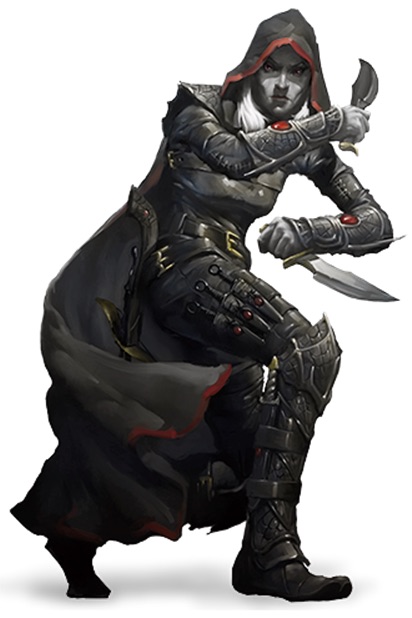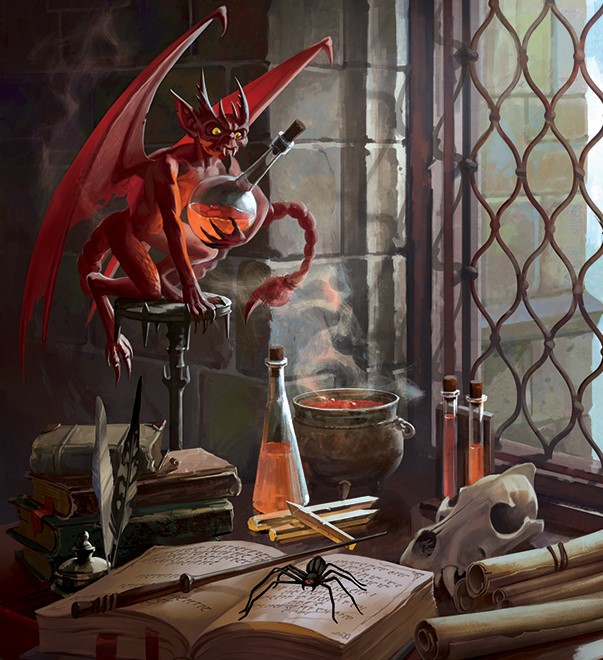D&D: Five Ways to Guarantee Sneak Attack

Playing a Rogue means figuring out all about Sneak Attack. With these five handy tricks, you’ll never be lacking for an extra d6.
Rogues are one of D&D’s oldest classes. They weren’t one of the original. But they came along fairly quickly after. And with the Rogue came the idea of stabbing someone in a vulnerable spot. At first it was called a backstab. But now that concept has evolved. Rogues make sneak attacks. They deal damage with precision and finesse. Whether you’re playing a master thief, a skilled spy, an assassin, a swashbuckler, or even a phantom, whose powers come from those touched by the grave, you’ll want to find ways to deal your Sneak Attack damage.
That single strike is the heart of a Rogue’s ability to deal damage. But it can be tricky to get, there are a few qualifiers:
Beginning at 1st level, you know how to strike subtly and exploit a foe’s distraction. Once per turn, you can deal an extra 1d6 damage to one creature you hit with an attack if you have advantage on the attack roll. The attack must use a Finesse or a ranged weapon.
You don’t need advantage on the attack roll if another enemy of the target is within 5 feet of it, that enemy isn’t Incapacitated, and you don’t have disadvantage on the attack roll.
In other words: have advantage on an attack roll with a finesse or ranged weapon; or have someone else who wants to attack your target within 5 feet and make sure you don’t have disadvantage. There are a few ways to make sure this happens.
Hide
All rogues get the feature cunning action which lets them use a bonus action to dash, disengage, or hide. It’s the latter one that we’re concerned with right now. In the right environment, you can hide and make a ranged attack at an opponent. Halflings make amazing rogues specifically because they can hide behind medium sized creatures. If you have a tall friend, you always have a hiding place nearby.
Knock ’em Down
Just like in life, in D&D when you get knocked down, you get up again. But whether you’re tubthumping or just chumba-wumba-ing, in D&D things are a little different. If a target is prone? You have advantage on melee attacks, which means that you’ll be able to deliver that sneak attack. There are a few ways to accomplish the feat of knocking a fighter prone and then sneak attacking them. As a rogue you could pick up a level or two of battlemaster fighter for combat maneuvers and action surge. Especially since you only get one sneak attack per “turn.” You could also make a friend that knocks targets prone with a spell like Thunderwave.
Become Invisible
Similar to hide, if you are invisible, you’ll be able to make an attack against your foe with advantage. If you have a spell or ability that turns you invisible or that prevents an enemy from seeing you (like blindness/deafness), you’ll be able to attack with advantage and get that sneak attack.
Magic
Speaking of magic, spells like Faerie Fire (which you can easily get if you’re a drow) will also give you advantage on attack rolls against affected target. Or if you take the magical secrets feat, or have a cleric friend, the spell Guiding Bolt is also an easy, low-level way to quickly gain advantage on any attack roll. There are plenty of other spells like this out there.
Summon Spells and Sidekicks
Finally this last one is less about getting advantage and more about making sure you have an ally nearby. Animal companions, familiars, summoned creatures, or sidekicks might not do as much damage as a PC–but if they’re present near a foe, that’s all it takes to give you that turn or two of extra damage, and that can make all the difference.
Happy Adventuring!








